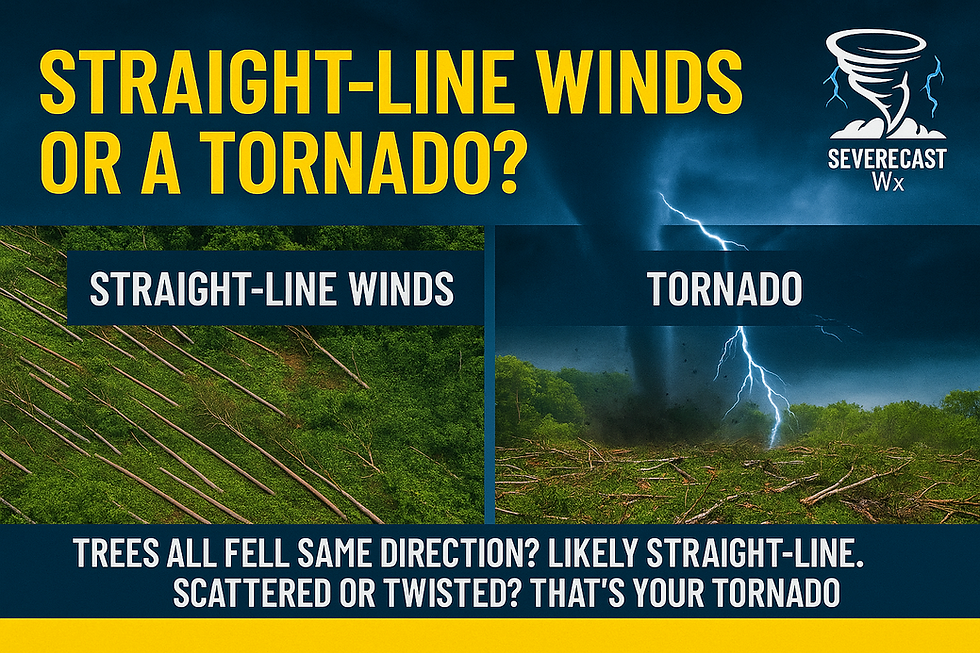Understanding the Dangers of Flash Flooding
- Nicole Carbone
- Mar 28
- 3 min read
Flash flooding may not seem as dramatic as tornadoes, but it is one of the leading causes of weather-related fatalities in the United States, second only to heat. Many people associate severe weather with tornadoes during winter and spring, but flooding poses an even greater risk.

Key Facts About Flash Flooding
Most vehicles become difficult to control in just six inches of water and can be swept away in 18 to 24 inches of water.
The national 30-year average for flood-related deaths is approximately 127 per year, according to the National Weather Service (weather.gov).
Flash floods can develop within minutes, making them difficult to predict and escape.
Floodwaters can conceal dangerous debris, washed-out roads, and electrical hazards.
Between 2014 and 2023, flooding claimed more than twice as many lives as tornadoes. Texas has recorded the highest number of flood-related deaths. A significant number of these fatalities result from individuals attempting to drive through floodwaters—this remains the leading cause of flood-related deaths.
Wildfire Aftermath & Flash Flooding
One often-overlooked flood risk is in areas affected by wildfires. If you live in a region that has experienced wildfires, you are in a high-risk flood zone. Areas downhill or downstream from burn scars are highly susceptible to flash flooding and debris flows, especially in steep terrain. Burned soil repels water like pavement, preventing absorption and increasing runoff speed.
Rule of Thumb: If you can see a burned area uphill from your location, you are at risk of flash flooding.
Floodwaters from burn areas can cause significant erosion, carrying ash, sand, silt, rocks, and debris. This can lead to destructive landslides and damage infrastructure miles away from the original burn zone.
Understanding Flash Flood Watches & Warnings
Flood Watch / Flash Flood Watch: Conditions are favorable for flooding or flash flooding. Stay informed, monitor the weather, and be ready to move to higher ground.
Flood Warning: Flooding is occurring or imminent. Avoid low-lying areas and evacuate if necessary.
Flash Flood Warning: A flash flood is occurring or imminent.
Seek higher ground immediately.
Flood Preparedness
Before a Flood:
Stay informed through alerts, warnings, and public safety information.
Determine if your home is in a flood-prone area using FEMA’s Flood Map.
Contact local emergency management officials to assess your community’s flood risks.
Develop and review a family emergency plan.
Prepare an emergency kit with essential supplies.
Consider purchasing flood insurance, as standard homeowner policies typically do not cover flood damage.
During a Flood Watch / Flash Flood Watch:
Listen to NOAA Weather Radio or local news for updates.
Secure outdoor items that could be swept away.
Elevate valuables and check your sump pump.
Avoid camping or parking near water bodies prone to flooding.
During a Flood Warning / Flash Flood Warning:
Move to higher ground immediately.
NEVER drive through floodwaters. Just 6 inches of moving water can knock you off your feet, and two feet can sweep away most vehicles.
Turn Around, Don't Drown! If water is rising inside your vehicle, climb onto the roof and call for help.
Do not drive around road barriers - they are there for your safety.
Know Your Flood Zone
For official flood hazard information, visit FEMA’s Flood Map Service Center. This resource provides updated flood risk data to help you prepare effectively.
Remember: Flooding is unpredictable and can be deadly. Stay informed, be prepared, and never underestimate the power of moving water. Turn Around, Don’t Drown!





Comments